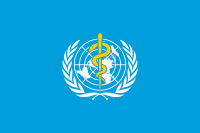
Photo from wikipedia
Introduction: The aim of this research was to use a survey to identify the cognitive capabilities of paramedics to recognize key clinical, pathophysiological and treatment features of toxic alcohol poisoning.… Click to show full abstract
Introduction: The aim of this research was to use a survey to identify the cognitive capabilities of paramedics to recognize key clinical, pathophysiological and treatment features of toxic alcohol poisoning. Additionally, evaluation of affective capabilities of paramedics in terms of the level of importance paramedics assign to toxic alcohol emergencies was evaluated. Methods: The study was conducted as an anonymous online survey. Demographic data, timed choice, and open-ended questions were collected to evaluate knowledge and identify gaps in toxic alcohol poisoning training by paramedics. The survey link was sent out to EMS organizations and individual paramedics. Bivariate analysis via Pearson correlation coefficient (PCC) was used to compare variables. Results: The response rate was 72.5% (58/80). Respondents were able to identify common sources of toxic alcohol exposure to varying degrees with 58% for methanol and 89% for ethylene glycol. Data indicate that a lack of understanding of the underlying pathophysiology was related to missing education (PCC <0.05) in toxicology. Education appears to be insufficient in regards to recognizing and treating toxic alcohol exposure. A majority of respondents (80%) believe that assessment and treatment of toxic alcohol poisoning is an important component of their training. Conclusions: Although symptom recognition for toxic alcohol poisoning is present in most EMS providers, pharmacological intervention and treatment approaches are often not known. The results indicate that there is a need for educators and curriculum builders to include additional coverage of topics of toxicological importance such as the anion gap and toxic alcohol assessment, pathophysiology and treatment.
Journal Title: Australasian Journal of Paramedicine
Year Published: 2017
Link to full text (if available)
Share on Social Media: Sign Up to like & get
recommendations!